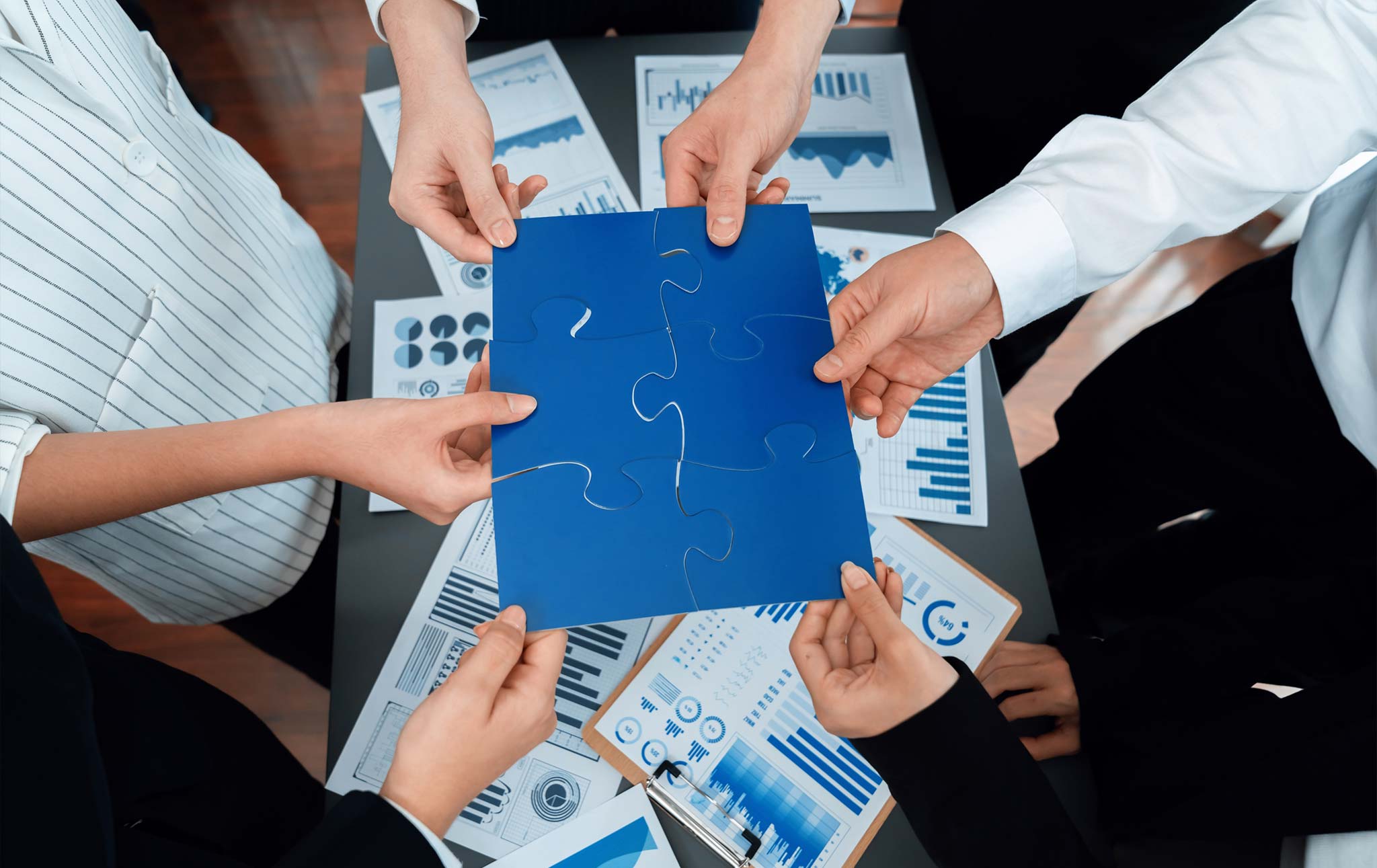In the midst of intense competition and rapid developments in the business world, the challenge of continually enhancing communication and fostering participation among facility members remains ever-present. Integration and coordination among stakeholders are an absolute necessity for achieving sustainable success. If you are seeking innovative and inspirational methods to promote this interaction and communication, you have come to the right place. In this article, we will explore how to enhance stakeholder engagement in your facility through approaches that benefit everyone and contribute to mutual success.
Who are the stakeholders and what is their role in achieving the facility’s goals?
Stakeholders are all individuals and entities who can be directly or indirectly affected by the performance and success of the facility or company. Stakeholders encompass a diverse group of individuals and entities, and their roles are also varied. Here are some common stakeholders and their roles in achieving the facility’s goals:
Stakeholders (Owners):
Role: They own the facility and provide it with the necessary capital for operation. They purchase shares or invest money in the facility.
Importance: Funding activities and projects and achieving financial returns.
Employees:
Role: They carry out the day-to-day activities of the facility and contribute to the production of products or the provision of services.
Importance: Achieving efficiency, productivity, and innovation in the facility’s operations.
Customers:
Role: They purchase products or benefit from the services offered by the facility.
Importance: Generating sales and revenue and determining the quality of products and services.
Local Community:
Role: They are impacted by the facility’s influence on the community through providing employment opportunities, environmental impact, and participation in social initiatives.
Importance: Achieving a balance between economic, social, and environmental needs.
The Foundation of Success in a Facility:
The foundation of success in a facility among stakeholders depends on several important factors, including:
- Effective Communication: It is well-known that effective communication is the cornerstone of building strong relationships among stakeholders in the facility. There must be mutual understanding and the ability to listen to and comprehend everyone’s needs.
- Shared Understanding: The facility’s vision and goals should be shared among stakeholders. This ensures that efforts are directed towards achieving common objectives.
- Innovation: Stakeholders in the facility should be willing to experiment with new ideas and initiatives, encouraging stakeholders to participate in these processes, thereby improving performance.
- Adaptation to Change: The ability to adapt to changes in the internal and external environment of the facility is fundamental to success.
- Responsibility: Stakeholders should share responsibility in achieving goals and participate in risk management.
- Sustainability: Relationships should be built in a way that supports long-term growth and sustainability.
- Achieving a Balance of Interests: There should be a focus on meeting the interests of all stakeholders, including employees, customers, shareholders, and the local community.
- Personal Skill Development: Developing communication and leadership skills among stakeholders can contribute to building better relationships and increasing success.
- Fostering a Team Spirit: By building a culture that encourages working as one team, interaction among stakeholders is enhanced, supporting the achievement of common goals.
- Commitment to Ethics and Values: Ethics and values serve as an important foundation for building trust-based relationships and achieving continuous success.
- Continuous Learning: Continuing to learn and understand industry changes and adopting best practices can contribute to sustainable success.
- Active Listening: Listening to different perspectives and needs enhances effective communication and contributes to well-informed decision-making.
How to Analyze and Identify Key Stakeholders in the Facility:
Understanding and interacting with stakeholders is of utmost importance for the success of any facility. Stakeholders are individuals and entities with a clear interest in the affairs and performance of your facility. If you want to build strong relationships and make informed decisions, analyzing and identifying these individuals is crucial. Here are some steps to understand this:
- Define Goals and Priorities: Before starting to analyze stakeholders, define the goals of your facility and what you aim to achieve. This will help you focus on stakeholders who can play a crucial role in achieving those goals.
- Identify Key Stakeholders: Begin by identifying individuals and entities who have the most significant impact on your facility. These could be important customers, key suppliers, influential employees, or even competitors.
- Gather Information: Use multiple sources to gather information about potential stakeholders. This may include online research, conducting surveys, and interviewing employees and customers.
- Assess Influence and Vision: Determine the extent of each individual or entity’s influence on your facility and analyze their vision of your business. Are they supporters or critics? Do they have goals that align with yours?
- Identify Needs and Expectations: Discover what stakeholders expect from your facility and what their needs are. This may include financial aspects, quality, service, and social responsibility.
Ways and Strategies to Improve Stakeholder Engagement in the Facility:
Stakeholder engagement is considered one of the vital aspects of organizational management that significantly contributes to the success and sustainability of the facility. When this engagement is effectively improved, it can enhance mutual understanding, improve decision-making, and build positive relationships with diverse groups of individuals and interested parties. Here are some ways and strategies that contribute to improving stakeholder engagement in the facility:
Analyze and Categorize Stakeholders:
- Analyze and categorize different stakeholders, understanding their needs and expectations.
- Adopt a different approach for interacting with each category of stakeholders based on your analysis.
Utilize Multiple Communication Channels:
- Provide a variety of communication channels such as email, social media, and meetings.
- Within these various channels, choose those that suit the needs and preferences of stakeholders.
Establish Participation Structures:
- Create structures or dedicated platforms to enhance participation, such as advisory committees or online forums.
- Within these structures, provide opportunities for stakeholders to express their opinions and contribute.
Leverage Technology:
- Use technological platforms like apps and online forums to facilitate communication and information exchange.
Maintain Ongoing Collaboration:
- Sustain communication and collaboration efforts over the long term.
- Collaborate continuously with stakeholders to achieve common goals.
Common Challenges Facing Stakeholder Engagement Efforts in a Facility:
- Lack of Awareness and Understanding: Some stakeholders may not fully understand their role in the facility or how to effectively engage. This can be a challenge in motivating them to participate effectively.
- Diversity in Stakeholder Needs: Due to the diverse range of stakeholders in a facility, meeting their varied needs can be challenging. Customized communication strategies need to be developed for each stakeholder group.
- Internal Conflicts: Internal conflicts and tensions within the facility can impact the ability of stakeholders to collaborate and engage effectively. Addressing these conflicts is essential.
- Information Technology and Security: In the digital age, technical challenges and security issues may hinder the implementation of technological solutions to enhance engagement.
- Resistance to Change: Some individuals may resist changing the organizational culture and adopting new engagement methods. Resistance to change can pose a real challenge.
- Providing Necessary Support: Ensuring that support and training are provided to implementation teams and employees working on engagement efforts can be another challenge.
In conclusion, improving stakeholder engagement in a facility is crucial for success and sustainability. Building bridges of communication and enhancing collaboration among different stakeholders is a sustainable challenge and an opportunity to improve performance and excel in the market.
Meeting stakeholder needs and expectations, and benefiting from their contributions and insights, fosters mutual understanding and reflects the facility’s commitment to transparency and social responsibility. It paves the way for continuous development and sustainable progress.

